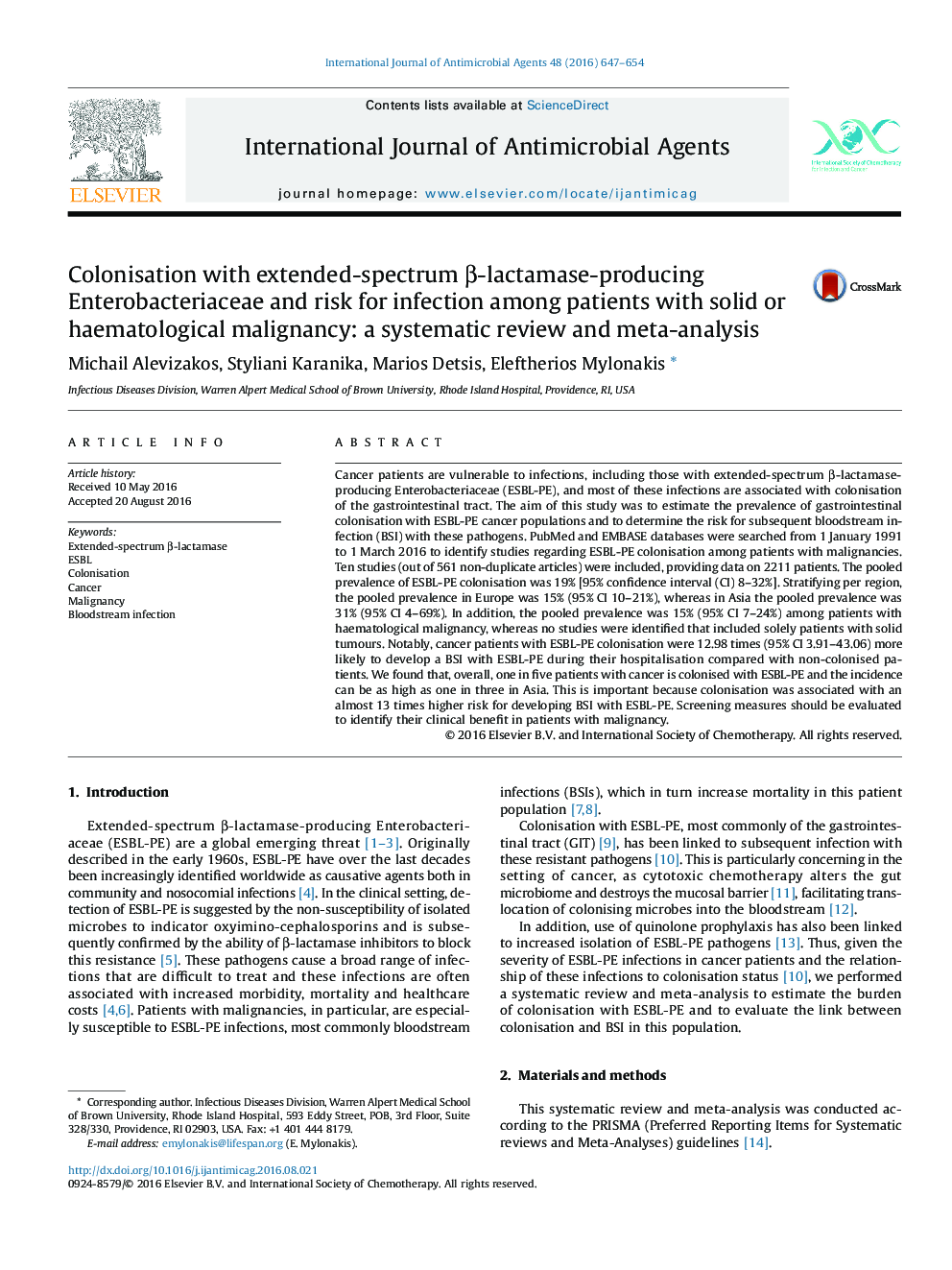| Article ID | Journal | Published Year | Pages | File Type |
|---|---|---|---|---|
| 5666856 | International Journal of Antimicrobial Agents | 2016 | 8 Pages |
â¢ESBL-producing Enterobacteriaceae (ESBL-PE) infections are often preceded by gastrointestinal colonisation.â¢Among patients with malignancy, 19% are colonised with ESBL-PE.â¢The ESBL-PE prevalence rate was 15% in Europe and 31% in Asia.â¢Colonisation with ESBL-PE increased by almost 13 times the risk for subsequent bloodstream infection.
Cancer patients are vulnerable to infections, including those with extended-spectrum β-lactamase-producing Enterobacteriaceae (ESBL-PE), and most of these infections are associated with colonisation of the gastrointestinal tract. The aim of this study was to estimate the prevalence of gastrointestinal colonisation with ESBL-PE cancer populations and to determine the risk for subsequent bloodstream infection (BSI) with these pathogens. PubMed and EMBASE databases were searched from 1 January 1991 to 1 March 2016 to identify studies regarding ESBL-PE colonisation among patients with malignancies. Ten studies (out of 561 non-duplicate articles) were included, providing data on 2211 patients. The pooled prevalence of ESBL-PE colonisation was 19% [95% confidence interval (CI) 8-32%]. Stratifying per region, the pooled prevalence in Europe was 15% (95% CI 10-21%), whereas in Asia the pooled prevalence was 31% (95% CI 4-69%). In addition, the pooled prevalence was 15% (95% CI 7-24%) among patients with haematological malignancy, whereas no studies were identified that included solely patients with solid tumours. Notably, cancer patients with ESBL-PE colonisation were 12.98 times (95% CI 3.91-43.06) more likely to develop a BSI with ESBL-PE during their hospitalisation compared with non-colonised patients. We found that, overall, one in five patients with cancer is colonised with ESBL-PE and the incidence can be as high as one in three in Asia. This is important because colonisation was associated with an almost 13 times higher risk for developing BSI with ESBL-PE. Screening measures should be evaluated to identify their clinical benefit in patients with malignancy.
